The Real Market With Chris Rising – Ep. 5 Eli Mills
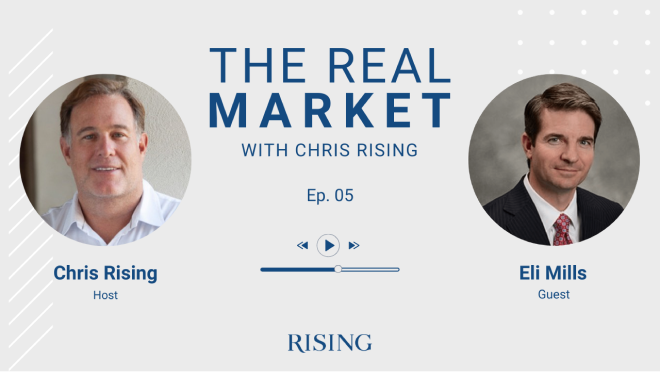
The Real Market With Chris Rising – Ep. 5 Eli Mills
Podcast: Play in new window | Download
00:50 CR: Today, we’re talking to Eli Mills, Senior Vice President at CBRE and one of the major investment sales brokers in Salt Lake City. I think Eli and I had a really interesting conversation and we go through all the different markets in Salt Lake City, industrial, office, and residential, and we get a chance to really get to know Eli. So I’m really grateful and excited to have you all listen to Eli Mills.
01:19 CR: Welcome to The Real Market with Chris Rising, I’m really pleased to have with me today, Eli Mills. Eli’s become a friend of mine as we have tried to get into the Salt Lake City market, we’ve become friends and I really think Eli understands Salt Lake City and the Utah market better than anybody in that market. So I’m really pleased to have Eli here. Eli, thanks for being on the podcast.
01:41 Eli Mills: My pleasure, my pleasure. Good to be with you.
01:44 CR: Thank you. So you’re a Senior Vice President over at CBRE, but you’ve been in the business for quite a while. I think you and I have been in about the same amount of time. Tell me a little bit about how you got into the real estate business. I think you’ve been in it for about 25 years. Can you give us a little history on how you got into real estate and specifically real estate brokerage?
02:03 EM: Sure, sure. I actually when I started at age 17 as an assistant to my older brother, who is an industrial leasing broker, I used to make flyers, and fax sheets, and open up buildings for him. And when I turned 18, I felt impressed to go off on my own at age 18. And so, I went and talked to the owner of the firm, and said, “Would you allow me to be a broker here?” He said, “We don’t hire 18-year olds, but I know you, I like you, you’ve done a good job for the last year here. So, go ahead.” So, I got my real estate license at age 18 and started as an industrial leasing agent at age 18.
02:37 CR: Wow.
02:37 EM: That’s how I got into… That was the hardest year of my life, that was really hard.
02:42 CR: Just from a life experience, it’s hard to even have a conversation with a potential tenant when you’re 18 years old. So how did you deal with that? I mean, an 18-year old calling a 45-year old who’s making a major real estate decision, that had to have some challenges to it.
02:57 EM: Yeah, it did, it did, that for sure was tough. I just tried to understand the market well enough, so that I could speak about it intelligently and I’d had a year to get up to speed on it. But it was a lot of trial and error, and a lot of just speaking openly with people, and trying to understand their needs, and what they were, and that’s what I learned in the business altogether is if you understand your clients’ needs and how to go about bringing that about in a way that’s pleasing to them, that that’s one of the key things in this business is really understanding them and what they need. And so, at age 18, I started trying to understand that, just because I didn’t have a clue what I was doing and I’ve just honed that in over the years.
03:33 CR: Well, I think what’s interesting is while you started at 18 in the business, you are very well educated and you’ve really taken it upon yourself to become an expert. Can you talk a little bit about where you went to school? And how having that real estate license at 18 drove your choice and career?
03:52 EM: Sure. Sure, so I sold real estate for a year, from age 18 to age 19 and then I went on a two-year LDS mission, which helped a ton because you’re out talking to people day in and day out and so that… I learned to get rid of my fear of speaking to people then. And then, when I came home from my mission, I decided that… I got married a year or two after I was home from my mission, I wanted to know how to do investment sales because I wanted to do investment sales. So at that age… Oh, what was I, 21 when I got home from my mission. I went through all the CCIM courses to get my CCIM designation, so that I could understand the numbers and what’s going on there. And then my wife and I decided that we wanted to teach our kids, that education was important, but I was making money in the real estate industry, and thought, “I don’t need a degree to do what I’m doing.” So I went to school one class a semester for 11 years to get my bachelor’s and then, after I got my bachelor’s, I felt like I should go and get some advanced degrees. And so, I just felt impressed that that’s something I should do and it would make me better in a number of ways.
04:54 EM: And so, I went to a joint program between Berkeley and Columbia where half the professors were from Berkeley, half were from Columbia. You were at home for two weeks then you went to school for a full week to get all of your classroom studies in and did that. So, I have an MBA from both Berkeley and Columbia, because at the end of the program they transferred their credits back and forth. And I would fly to either New York or to California, be on campus for the better part of a week so that I still have the same amount of hours you would have in a full-time program, but on the different campuses with the teachers there, it was phenomenal, I loved it. And so, I have an MBA from both Berkeley and Columbia now. The University of Utah is where I did my bachelor’s over the nine, 10, 11-year time period.
05:33 CR: Well, that is really an impressive story. And of course, you did all this, right, where you and your wife just could be peaceful at home at night, right? I don’t think so.
05:43 CR: Why don’t you tell our audience how many kids you have and how you handled the kids while you were getting your undergraduate and your dual graduate degrees?
05:52 EM: So, my wife and I had four kids pretty close in age together and so I would go to either early morning classes or late night classes for my bachelor’s, and we still had four kids while I was doing my MBA. And so, when doing the MBA, that was the tough time. My sweet wife just worked so hard and did so much, and I was still working full-time, so I had to do homework when I get home for the night at 6 o’clock at night until midnight, and jump in and have dinner with the family and then go back and do homework consistently. And then right after I finished with my MBA, there were two kids that needed a good home, so we adopted them, so then we had six kids. They were in the same age group, which give us six kids between the ages of five and 10 at that time. And then just recently, now I have four kids out of the home, I have two on an LDS mission, two in college, one about to get married, so we’re down to two kids at home and we felt like we could do some more good. And so we are foster parents to a three and a five-year old little boy.
06:55 CR: Oh my God.
06:56 EM: And we were just asked to adopt ’em, and we were just thinking, “Oh, we’ll do foster care, and bring kids in our home, and help them, and mentor parents, and just try and help out a little bit in the community, and try and help in that way.” But we’ve just been asked to adopt those children, which we’re now in the process of doing. So now we have eight kids. So we are an eight-child family, and they’re a delight, I love ’em. My favorite part of any day is any time I get to hang out with my wife and my kids.
07:21 CR: Well, that’s terrific. Well, I will say that I think Rachel, your wife, probably has got a sainthood waiting for her up there, so. That is terrific because…
07:31 EM: I agree.
07:32 CR: Yeah. Well, I think that’s great that we get to know you a little bit on that way. But I think that really resonates, everything that you’ve said about your diligence on getting your degrees, and being a father, and being a husband relates in the way you and I have interacted in business and that I find you to be just… It is what it is. You’re gonna tell the truth and a seller of a property may not wanna hear everything about it ’cause they’re trying to get the highest price and then as a buyer, you’re very honest about why the price should be this and as a buyer I’ve gotta respect that. And so I think you, from my perspective, and I think the community’s perspective in real estate, you’ve really built a strong reputation, I think we see firsthand how that’s developed.
08:14 EM: Oh, thank you.
08:15 CR: Yeah. Let’s talk a little bit about brokerage in the State of Utah and in Salt Lake City. It’s a market that is continuing to grow in interest in terms of national and international real estate, but can you take us to its simplest form? Is buying in Salt Lake City, is there a Downtown Salt Lake and that’s really what it is? Why don’t you give us an overall picture of how you describe the Salt Lake City market?
08:44 EM: Okay, I’d be happy to. When one’s looking at Salt Lake, it’s good to understand what it is, what’s the lay of the land, and so, first of all, Utah has 3 million people, about 3.1 million people in it. However, if you look at the greater Salt Lake area, the Salt Lake Metro, and that would go, if you’re in Downtown Salt Lake on a CBD, you drive 45 minutes to an hour to the north or 45 minutes to an hour to the south on I-15 and all the surrounding areas, that area right there, and it’s a four-county area, has 80% of the population.
09:16 EM: So 2.4 million of the people live within a 45-minute to an hour drive of Downtown Salt Lake City. So you really have a lot larger group, a lot larger MSA per se. Those are separate MSAs but if you were to look at ’em and combine ’em into one, it’s actually a very large MSA. And within that area, this is also interesting, within that same area, you have four universities, you have a number of community colleges and liberal art schools, where we have over 200,000 students. And with those 200,000 students you have 35,000 roughly graduating every year, who want to work and live in Utah.
09:56 EM: And so, what we’re finding is, you’re seeing a lot of out-of-state employers coming here. For example, this is the largest office for Goldman Sachs outside of the state, outside of New York City and they have very high level things that are done there. It’s their major credit office, and, in fact, it’s their primary credit office for all of Goldman Sachs. It’s their most requested office. They have between 26 and 2700 people. Fidelity has a large presence. We have a huge tech corridor and maybe we have… What’s really driving Salt Lake and the strength of Salt Lake are a couple of things: One, it’s employment and employers continue to come here for the highly educated workforce and we also have the youngest population in the entire country. So we have a lot of millennials and a lot of millennials that are there and then a lot of population behind it coming. We actually have the fastest birth rate in the entire country.
10:47 CR: Wow!
10:49 EM: Yeah, yeah. And then we have a lot of immigration coming because we have a very low unemployment rate, but a lot of companies that want to come here, and a lot of people that wanna live here because of the community, because of the lifestyle that we have. And so, something a lot of people don’t realize is, people look at Denver, and say, “Oh, the lifestyle in Denver’s so great.” It is, however, Utah has the same type of lifestyle, but everything’s an hour closer. Our CBD is 10 minutes from the airport. Within 45 minutes of our airport, you can be skiing at Park City or a number… There’s 10 world class ski resorts within a 45-minute drive of Downtown Salt Lake City, which means it’s within a 45-minute drive of our airport. And so those types of dynamics, those types of things, that type of growth has caused a lot of employers to come and when employers come, and the population’s growing, investors then come, and say, “Wait a minute, why do you have all these employers coming?”
11:43 EM: And so I could start to rattle off a lot of large, large, large both tech companies, financial service companies that are here and that are continually coming here, which is causing a lot of net in migration to Utah because of these dynamics that are here. And we’re still a very low cost area to live and to work. One of the reasons why it’s the most requested office in all of Goldman Sachs is if you’re looking at, “Okay, I can go to San Fransisco, I can go to New York. Oh, wow, I can go to Salt Lake and I can pay a third for my rent and I get paid the same amount, oh, wow, I mean, I can be mountain biking, or skiing, or fishing, or hiking within 30 minutes, 45 minutes of leaving the office?” It’s a very, very attractive lifestyle to a lot of people.
12:25 CR: Well, we are certainly seeing that. I think also when you look at how businesses are evolving and the brain drain that’s going on in San Fransisco and now Seattle’s starting to experience in the sense that, it’s very hard for them to get new workers. They’re people, who just can’t do it in terms of the cost of living, but also, just that they just really don’t wanna live in the big, heavy metropolitan areas. We see Salt Lake as a natural place. I’ll also say that we see an unbelievable amount of diversity in 2018. You didn’t see that in 1994 or 1998. And when I say diversity, I mean diversity in not only ethnic diversity and religious diversity, but in diversity in industry in Salt Lake City. It’s not just Goldman Sachs, which is great, but you wouldn’t wanna be a city that only relies as the second biggest office. There are some major companies across the spectrum including tech that have come to Salt Lake. Can you describe for the audience a little bit about how that growth has happened and where it’s happened from a geographic standpoint?
13:36 EM: Yeah, absolutely. By the way, just so you know, for Goldman Sachs, I only use Goldman Sachs as an example. This is actually their most diverse office. And so when you go to Goldman Sachs here in Salt Lake, you’ll see people from all over the world. And the growth is happening all over. The growth for a lot of people coming into Salt Lake, they’ll go Downtown because they’ll look at it, and say, “Oh, you know I wanna be in a Downtown area.” And so they’ll come Downtown, but then it grows over into the suburbs. So Salt Lake is, and by the way before I forget you asked a little bit about tech. There’s 7000 tech-focused companies in Salt Lake. So there’s just so many tech companies now. When I say Salt Lake again, that’s the greater Salt Lake Metro. Salt Lake has a number of different pockets. So we have a lot of people come in to Salt Lake, and say, “I wanna go to your CBD. I wanna go to your CBD, that’s where I need to invest because I’m going into a secondary market and I can’t risk my reputation, to go, and say, I wanna go in to Salt Lake and it’s a secondary market. And, yes, there’s all these great reasons. We all know we wanna go there, but let’s go and buy a suburban office.”
14:41 EM: The thing about buying suburban office in Salt Lake versus in another market is our CBD is strong and it does well, but we have three or four incredibly strong pockets that are suburbs within the Salt Lake valley, or the greater Salt Lake Metro, that are every bit as strong as our CBD or stronger. For example, there’s Salt Lake County and then, so Salt Lake County is the base, that’s where everything is. The next largest county is Utah County and it’s to the south of Salt Lake County. And the way Salt Lake developed, it started in the CBD and then it moved south. Well down where Brigham Young University is in Provo, it started developing towards the south end of Utah County and started to move north. And so what you have right now is you have the two counties growing together to where there’s not a lot of land left between the two and where that is converging is an area that we affectionately call, Silicon Slopes.
15:39 EM: Now, everywhere… And the entire Salt Lake Metro is actually Silicon Slopes, but the heart of it, where there’s a lot of tech companies, is between Sandy and Lehi, within that area, you have eBay, with a large 30-acre campus. You have EMC Squared with a large campus. You have the headquarters of multiple companies. You have, Adobe has a large, large campus and once they expand, it will be the second largest campus for Adobe in the United States behind their headquarters in San Jose. You have the NSA, which has a multi-billion dollar facility there. Which by the way, they’re probably listening to this phone call now that we said NSA in Salt Lake City. That’s one of the espionage centers. You have Intel Micron also down there that have a million and a half square foot facility, where they create chips and where they create things that they don’t want to have done overseas. So they’re really, really high end chips that they make, are made there. And so the dynamics that you have, and that’s just some of the larger players…
16:39 EM: I could continue to rattle ’em off. We have 7000 tech-focused companies here. Our tech market is very strong and investing in office or multifamily, between Sandy and Lehi, it is incredibly strong. It’s worthy of core capital going into those marketplaces. There’s also other pockets and suburbs where you can look at them and say this is a really strong suburb. And it’s very different than a lot of other market suburbs and here’s the reason. In Salt Lake, we value a number of things. We value religion and there’s, I think it’s 50/50 Mormon and then other religions, if I’m not mistaken. I don’t know the exact stats, but a lot of people that come here value family, they value religion, even if it’s different than the Mormon religion, because as a community people celebrate that, people enjoy that. And so you can come here and worship whatever religion you may be and know that you’re around people that are like-mind and that also enjoy that. And so you have a number of people of other faiths that have come that enjoy being here. Again, the family’s a big element, so people don’t like to travel an hour to get to work.
17:43 EM: In fact, our average commute is 22 minutes. So the reason you need these really strong suburbs is that not everyone is going Downtown. Also, our Downtown is in-fill, you know there’s not a lot of land you can build around in our Downtown. So for eBay who needed a 30-acre campus, they were gonna go south, and they were gonna go between Utah County and Salt Lake County towards the border, because then they can pull from all of the population of Utah County and all of the population of Salt Lake County and be within an acceptable commute to where their pool of employees is huge, it’s large. And so, that’s why you’re seeing different pockets within Salt Lake. And then if you go up north of Salt Lake City, there’s not a lot of office, it’s not a strong office market. It’s very strong on industrial and manufacturing. We have a lot of rail that’s up in there. And so, there’s just different dynamics as you go along. Utah County, so the County to the south of Salt Lake County, it has a lot of tech between the south end of Salt Lake County and the north end of Utah County. The amount of tech there is, it is significant. Lot of tech there.
18:49 CR: When you say the term everything needs to be 20 minutes away, that was Los Angeles and that was Southern California, really all the way up until the early ’90s. Our answer was to just keep building wider freeways and you could live down in Orange County, get to LA, you could live on the east side of LA and get across to the west side. Obviously, that’s not the case here in Los Angeles. One of the things that I think is interesting about Utah and about Salt Lake City is the amount of investment that you’re making in public infrastructure, and not only from the freeway perspective, but from the trains and the public transportation. Is that something that businesses are looking at? And can you describe a little bit about that? How you prevent becoming Southern California, ’cause you know the growth is gonna keep coming. How do you see that affect business decisions and real estate decisions, and what exactly is happening in Salt Lake in regard to that?
19:43 EM: Yeah. Good question. So, within the… So, I talked before about the greater Salt Lake area, the Salt Lake Metro. We have commuter rail that runs from one end to the other. And that’s the high-speed rail that goes between 70 and 90 miles an hour, has limited stops. And so, if you want to live in one of the other communities, you can jump on rail and very easily be to another city very quickly, because of our commuter rail. We also have light rail, which is essentially the subway on top of the ground. We have a very, very elaborate system. It runs from the airport to Downtown, up to University of Utah, and then down south through the Salt Lake Valley and it has different areas where it will go off into different communities.
20:26 EM: And so, we’ve won a lot of awards for being one of the best. In fact, I think we’re ranked second of… And it depends on which source you’re looking at, but we’ve been ranked second and third amongst cities because of our transportation core or because of what we do for rail. So the rail… And our rail serves about 80%, between rail and bus, serves about 80% of our population, and that serves seven counties and 1600 square miles. I mean, it’s very significant and we’re consistently adding to it, and ridership is very strong.
21:03 CR: And unlike Los Angeles at this point, though it’s changing, your airport is connected with rail, so that you can actually… You’re not dependent on renting a car once you land at the airport.
21:14 EM: It is. In fact, we have the 25th busiest airport in the country, and we’re currently going through a $3.6 billion remodel of our airport and expansion of our airport. We have about 22 million passengers a year go through the Salt Lake International Airport. And one of the things as well that’s very attractive to a lot of out-of-state companies that need to have satellite offices or headquarters is that within a two-and-a-half-hour flight, you can be to over 50% of the US population. And so, to have an office in California or be headquartered in California, and then to have an office in Salt Lake City, it’s a day trip. You come in in the morning, take care of business, get on the plane, you’re back with your family at night.
21:57 CR: That is truly…
21:58 EM: Yeah. Makes a big difference. By the way, you and I haven’t talked a ton about rail, and then also just our transportation system. We’re called “the crossroads of the west” because within about an 11-hour drive, you can be to all of the major markets in the western United States. And so, we have a lot of… We have a ton, just a ton of companies that are locating here now and that are coming here because you can take something in from… You can bring something in from overseas, put it on rail, bring it into Salt Lake City, and then distribute it to the entire western United States within a day. Because we’re so central for that. So, our industrial market is very, very strong. We have a $207 million… Sorry, 207 million square feet base for our industrial market, where we have five million square feet under construction right now.
22:49 EM: And, they’re actually working on an inland port and working very hard on it. And if they’re able to accomplish having this as an inland port, that kinda blows the doors off of your industrial arena. And because we have so much rail coming in, for them to bring it in on rail, it’s an inland port, you’re not taxed on it, you can then put it back together, manufacture it, do what you need to with it, before you’re being taxed on it, and then send it out. There is a lot of steam behind that becoming a reality, and if it does, it only further makes our industrial market that much larger and more important.
23:24 CR: Well, and to that point, I think one of the issues we’re having in Southern California is it’s the tightest industrial market in the country, but probably the world, but it’s now pushing its way outside of a one-day drive from the port on truck. So, once you get it on rail, it becomes less important that it be in Southern California, ’cause once you’re on rail, you’re on rail. So, getting out to a place like Utah, which is a natural distribution point, makes a lot of sense. On that five million square feet of industrial, is all of that going to Amazon?
23:54 CR: What are some of the industrial… Logistics companies and things like that? What are some of the logistics companies who are taking that space?
24:01 EM: There are a lot of them. And frankly, I wish I could tell you the names of ’em. Amazon is doing a large facility right now by the way. So Amazon already has I think 700,000 square feet here. They’re doing a new 800,000 square foot facility near where the inland port would go. So they’ll be about a million and half square feet, but 700 of it it’s already in place. And so they are doing a major facility but there’s a lot of them. And a lot of major distributors are doing that. I could get you names later but frankly I’m not…
24:31 CR: No, no problem.
24:32 EM: I’m not as tight in there. I do so much of the investment sells that I haven’t had to really know that as well.
24:37 CR: Let’s talk a little bit about that, on the investment sales. One of the things I always find interesting in these kind of conversations is talking about your highlight deal, a deal or two that you look back on as a life lesson. Can you talk a little bit about one of your deals that you really look back to as like, “Wow, this is why I got in the business or, man, these are a lot of lessons, and I’d like to impart them on to people?”
25:03 EM: Sure, sure. I can tell you one right now that I’m currently marketing that it has been a lot of fun, and it’s just a phenomenal deal. So it’s a 493 unit multifamily deal. It’s called 4th West. And the developers… So this is what I’ve loved about this and what I’ve learned from it, is the developers of this, a group called Salt Development, they came to Utah and said, “You know what? We need some really nice product here. We need first class luxury product here and it’s not here.” And so they came and near Downtown Salt Lake before anyone kind of saw what was going on there, they picked a site that was just a titch out of at the time what was considered a good place to be in Downtown Salt Lake. But the site they picked has a commuter rail stop, a light rail stop, and a bus traffic transit stop. And the views from this site to Downtown Salt Lake are breathtaking, probably some of the best in the entire state.
25:57 EM: And so, then what they did is they built just such a phenomenal project. And they had such a passion for it. Every detail of this asset when you look at it is phenomenal. It’s 493 units. It’s a six-story wrap product, and on the sixth floor of the parking garage, which is over an acre in size, they made it an amenity deck. So we have a 5100 square foot gym that every detail is just phenomenal on this. And a full sized basketball court. So you have a tennis court up top, and it’s on top of the parking garage, so you can use it 24 hours a day. And the largest pool I’ve ever seen. There’s seven fire features on top of this thing. It is breathtaking and everything… Anyone who has ever toured it, it’s kinda funny, I now start to gauge my tours by how many wows I hear. And I’ll walk away and say, “Hey, that was a 30 wow tour.”
26:49 EM: And so, the thing that’s been fun about it is, that’s gonna break records. We’re gonna sell that somewhere in the 350 to $360,000 per door range. It’ll be somewhere in the mid fours to five cap rate range depending upon where it trades. It’s brand new product. It’s beautiful. But just watching the passion that Salt Development has created, and that every detail of everything they’ve done. But then to see it all come together and see the marketplace, which by the way, when they went there, everyone said, “You’re crazy.” And now everybody is saying, “Why in the world didn’t I do that?” So they took a risk, but they’ve built something so beautiful that now everybody is looking at it in awe and it has set at completely new standard for our marketplace. Everyone compares themselves to this. We have five Utah Jazz players that live there. The largest employer is Goldman Sachs of people that live there, and then the University of Utah Healthcare Systems. And so that’s been a really fun deal, just to watch the passion, watch the vision…
27:50 CR: And are you seeing international as well as domestic institutional capital taking a look at this?
27:57 EM: Absolutely. Yeah. We actually have 160 confidentiality agreements signed on that deal, which is huge. We have money from all over the world looking at it. We have institutional money looking at it. And by the way, we have more investors looking to come into Salt Lake right now than we’ve ever seen. In fact, Price Waterhouse Cooper did a survey at the end of last year where they went out and interviewed buyers and said, “Where’s the market you want to enter?” And the number one market that people said they wanted to enter was Salt Lake City. And we’re seeing that. I’m doing interviews… I’m having meetings with people on a weekly basis where they’re saying, “I want to enter your market. Can you tell me a little bit more about the marketplace?” And so there’s a bit of a buzz.
28:41 CR: I know our firm is one of those who’s been just trying so hard to get the right deal to get us there.
28:48 EM: We need to get you here.
28:50 CR: You know I’m there a lot because of an investor in Summit Powder Mountain, so we get to Utah, but I wanna have a real reason on the business side. Let me ask you this. We’ve talked about industrial. We’ve talked about multifamily. What are you seeing in terms of office and really in terms of some sales that have happened so we can gauge kind of where you see going in cap rates?
29:15 EM: Sure, sure. Good question. So there’s not as much product on the market right now for office that I’d like to see. A lot of people in Utah when they get here, they like it here and they’re not anxious to sell. And then the number of the developers locally love their product and they’re not anxious to sell. That being said, you can come here and you can buy scale. So one of the assets I sold last year was the South Towne Corporate Center. It is a 250,000 square foot project. Cap rate on that was low sevens. And this is a beautiful project. The main tenant is E*TRADE. That’s the primary tenant. There’s a lot of other tenants. New York Life and a lot of other credit. It’s in Sandy, so it’s in a great location. It’s beautiful product. Really well built, $245 a square foot, and just over a seven cap.
30:05 EM: That’s a really nice deal. That was a good buy. By the way, a Chilean Pension Fund was the capital behind that deal.
30:12 CR: Wow.
30:13 EM: So yeah. Yeah. So our cap rates are, depending upon the product, high sixes, low sevens. I sold the Cottonwood Corporate Center the year previous to that and then the Millrock the year previous to that. And where we’re seeing the nicest office buildings in Salt Lake, that’s multi-tenant, they’re going for around $300 a square foot. And then our Downtown is in the $400 square foot range. Cap rates Downtown, because there’s so many people that want to be at Downtown if something does come, they are lower than our suburbs. So a seven cap in the suburbs would be a six and a half cap today in Downtown, in the CBD, because so many people are trying to get there and want to enter that way and then they can kinda spread from there. So you’re about a 50 basis point difference.
31:06 CR: Now, are things trading at below replacement costs or are things trading above therefore thinking that people will start building some new buildings?
31:15 EM: Good question. So they are trading at or above replacement costs. So the only way you can sell at replacement cost is if you’ve owned it for a while and replacement costs have gone up, or you own the land for a long time, or something along those lines. Typically, it is above replacement cost. We currently have 1.7 million square feet under construction in the greater Salt Lake area, and our base is 50 million square feet. So we have a 50 million square feet foot base, about 1.7 million square feet under construction. I haven’t checked recently, Chris, but last I checked we were like 60% to 70% pre-leased on properties that were under construction. I don’t know if it’s that high right now, but it typically has been, only because there’s a lot of companies here that want to expand or new companies coming in, and it’s been hard for them to find large blocks of space. And so we’ve had a very high percentage of pre-leasing in general. Though, I haven’t checked that for the last three, four months, so I’m not sure where it is now.
32:18 CR: So California, we have a lot of supply constraint whether it’s just because we’re built out, or whether it’s NIMBY-ism or ____, it’s very hard to do new development in Southern California and Northern California. How would you describe the Salt Lake City area? Is it similar more to Texas where anybody can build wherever they want, whenever they want? Or is it have some natural, either through zoning laws or how it’s built out, some natural supply constraint?
32:46 EM: Great, great question. Great question. So, it’s between the two. It’s certainly not Texas, and it’s not California either. So, there are zoning laws. There are certain pockets where you can develop certain types of product, and you can certainly look at a number of these assets in different markets and say, “You just can’t build again in this marketplace.” Whether it’s because you’re land constrained, or because you can’t get the zoning, or what have you. But when you go to develop, this is a very development friendly, business friendly environment. In fact, we’ve won awards for being a business friendly place. Both from a… Primarily from like a city and state standpoint saying, “Look, we like development. We have a lot of people here that are going to be wanting jobs,” and so you’re trying to continuously develop and grow, and do it in a smart way.
33:41 EM: So when you are trying to develop something, it’s nowhere near the hassle that you would get in California. Unless you’re trying to do something that’s different than zoning laws or just so drastic or so different that people might fight it. But by and large, you can develop here in a very quick time period and get through the city in three to six months usually at the most. You can usually do it pretty quick.
34:09 CR: I know from our research and our attempts to buy that it’s become a very mature market in terms of debt. In that the global and the domestic debt sources do not look at it as a tertiary market, but how would you describe Salt Lake City? Is it a top tier core market? Is it really still a tertiary market? When you’re giving the pitch on Salt Lake, how do you describe it?
34:36 EM: Good question. So if we were to say we’re a top tier market, I think we’re kidding ourselves. We’re a very, very strong secondary market that’s picking up speed and momentum. A lot of people, and I think this is well phrased, look at Salt Lake and say, “Salt Lake is Denver 10 years ago.” Right? Where a lot of capital is now starting to come in, you’re still at this early stages of that, but most certainly it’s happening and we can see it happening and I live it every day. And so we are very, very strong, strategic western market, but one of the things that’s so appealing, I think, about Salt Lake is you look at it and say, “It’s a low cost place to do business. We have the youngest population in the country. We have an extraordinary education system, higher education system, where we’re consistently having so many graduates come in that want to live here.”
35:23 EM: So for an employee stand base or an employer standpoint, this is a very attractive place to be. That then feeds on itself. If employers want to be here, so does everybody else, and if you have that population and that continual growth then you’re at a low enough price point, and there’s reason to believe that an investor can come in here, expect rents to go up, and expect to be able to get a nice yield on what they’re doing. In fact, from 2000 and… I’m trying to remember when it was. I think from 2006 through 2016, we were one of the top 10 markets for an investment return. And there’s reason to think that that will continue and they were near the end of that occurring.
36:07 CR: Mm-hmm. Well, one of the things that we all see in business is how technology has grown as a market sector for when you’re looking at investments from office, you look at all the different types of tenants, technology has really, really made a big difference. And into that, and I know that in Utah we talked about earlier that there’s a lot of technology companies, but I’m gonna kinda take that technology and go on and just ask you, how have you seen technology influence how Salt Lake City is growing? What has been the influence of the technology companies on the economy in Salt Lake City?
36:46 EM: It’s been significant. It’s been very significant. So, the technology companies that are here, Adobe, eBay, and a lot of others, there’s so many others. It’s affecting our marketplace because the south end of the valley, where before it was open ground between the two counties, now is very, very valuable ground. It’s highly desired ground and they have created this little Tech Mecca where people want to be. And that then has caused, that then causes the need for development to continue, housing to continue, and so forth. And so it has made a significant difference. It’s important to know though, a lot of the time you’ll say, “Oh yeah, but is that sustainable wealth?” The majority of the tech companies in our marketplace, they’re not the billion dollar unicorns.
37:35 EM: They’re a lot of them, most of them are very profitable, have a business plan that’s been working for years. We certainly have our billion dollar unicorns like anyone, but not as many as you might think. Most of what you’ll see if you were to survey our tech market are well established, very profitable companies. For example, Ancestry.com, their corporate headquarters is here; Xactware, corporate headquarters is here; 1-800 Contacts, corporate headquarters is here; StorageCraft, corporate headquarters is here; Progressive Finances, corporate headquarters is here. And a number of those that are highly profitable companies that are doing very well, and the list goes on and on. I’m just rattling off what’s coming to my mind.
38:17 CR: And have they, like in other cities like San Francisco and Santa Monica and Los Angeles, but also in New York and Boston, a lot of those companies have converged on a CBD because they like the density and they like being close to other tech companies. Is that something that’s happened in Downtown in the CBD of Salt Lake or have they taken a different approach in Utah with these corporate campuses?
38:41 EM: In Utah, they’ve taken a different approach in its corporate campuses out south, but the challenges a lot of them when they’re coming here, they’re not just coming here to lease a hundred or 200,000 square feet, but want the ability to really make it a mainstay for them and a large campus for them. And to get 30 acres in Downtown Salt Lake, good luck! You’d have to buy up a couple city blocks. You just can’t do it. And so what are you’re gonna do? You’re gonna go out to where you can do that and where you can pull from the population. See Downtown Salt Lake, it can pull from the Davis and Weber County to the north and pull people in. They can pull from New Salt Lake County and then they can pull some from Tooele County and a little bit from the Park City area.
39:24 EM: So it’s almost as if although they’re not creating a new CBD, it has the same dynamics. They’re able to pull from such a large population, able to buy ground and have a very large facility and expand, but that has become a Tech Mecca because there’s ground available, the employees are there, the infrastructure is in place, you have the commuter rail, you have the light rail, you have I-15 going right down the middle of it. Oh, and you have home. You have land all around it to build starter homes.
39:51 EM: So if you wanna hire some guy at $50,000, $60,000 and the guy’s brilliant and wants to stay in Salt Lake, well, he can actually afford to buy a home. Our median home value is $330,000. So he can buy a home, live there, be happy and have a very nice lifestyle. And if he wants to have kids and a dog and a white picket fence, he can. If he wants to mountain bike all day long, you couldn’t find a better place for it. If you like to be outdoors, short of the beach, if you like to be outdoors and like have outdoors activities, man, you can hire someone, bring them here, they can buy a home and have a really nice lifestyle. And so that’s, what is happening in those tech areas is they’re in the suburbs, almost creating another CBD per se, which is why our suburbs is so strong.
40:32 CR: That makes a lot of sense. And I don’t mean to always make analogy to Southern California, however, it does sound a lot like how Orange County grew in the 1970s in that, a CBD wasn’t right for everybody, where you could go a little further south, you can build a headquarters campus, have places for people to live. I think the one thing that I would point out to our listeners and to any of my investors out there is, Salt Lake and the region has already planned for its growth by the train between Provo and Ogden, is an amazing thing that they built and really connects. So, let me switch subjects, but I wanna stay within technology. So you’ve been in the business about as long as I have and I certainly have seen the business change. Can you talk a little bit about how you’ve seen the brokerage business change over your time in the business, specifically also, how is technology changed it? What are the things that you see that are different about what you’re doing in brokerage today that maybe different from 10 or 15 years ago?
41:35 EM: Sure. Sure. So, I was, well, first of all, I was around for the first fax machine. And I remember how we thought the first fax machine was the coolest thing ever. And, “Oh, wow! I can fax a lease instead of have to run it to somebody before it’s ready to be signed.” I was here in those days. And I used to have flip phones. And was one of the first guys to get a cell phone because I saw that it could make me more efficient. So a couple of things that I’ve loved about technology in our industry, is it makes everything more transparent, which I think is so critical for everyone, because if you have transparency then you’re making decisions based on the information that’s available, and good information, and so that’s certainly made a difference.
42:16 EM: I’ve also seen it grow significantly from the ability for us to reach out around the world. Because I’m at CBRE, we share a common platform within the company. We’re one company, we’re not a network, right? We’re an actual company and so we share a database and if anyone’s looking at any property within CBRE in another marketplace, and they go and put in their preferences, I have the ability to pull from them. So I’m able to pull from the most active buyers throughout the country, from the one-off buyer, for those who are looking to invest because of our platform and the significant amount of money CBRE puts into technology, I can see that.
42:56 EM: By the way, I can also see who open my e-mails on an asset that I’m marketing, how often they open them, what documents they’re pulling off of my war room, how often they’re going to my war room. Just the technology allows us to then hone in for a seller and say, “Look, this is the most active buyer for this particular asset, here’s what we’re seeing, here’s what’s going on.” And it allows us to make, for the seller of an asset, it makes everything more transparent for them. I share with all of them, when I sell an asset, I share with them, every single buyer, what they’ve said, what my notes are, who likes it, who doesn’t, what’s going on. So the technology has allowed us to be a lot better at our jobs and a lot better at making things transparent to our clients.
43:40 CR: Well, I imagine when you started it was similar to mine, where the note card box that one had was under lock and seal. You didn’t share that with anybody and it was really, you’re on your own island and you gotta go make it work and I don’t really see that anymore. How does it work internally? Are you just carrying your own flag? Do you have a team or how do you work within your office there?
44:06 EM: Great. I have a team. Patrick Bodnar is my partner, and we have three support staff for our team. I brought Patrick Bodnar over, because I saw such an opportunity in multifamily, but I wanted to have somebody on the team just dedicated to multifamily, to make sure that we can become the absolute best at it. And so I have a team that I work with and have really good people. We’re about to add another person to our team, another support staff and then potentially another broker. So, yes, we are very open. One thing that I’ve loved about CBRE, since I’ve joined CBRE five or six years ago, is that we share a ton of data, best practices. We have within CBRE, we have a Western US multifamily group and we get on a call once a week and talk about who’s buying where, who just killed the deal and why, where capital is, how we can flow capital from one market to another.
44:58 EM: I mean it is like… We don’t hold information in, we actually share it with each other so that each of the groups in our other markets can be the best in their market as well. That is night and day. Within my office, there can be that competition element that you have to watch out for, but I just determined that I’m just really open, really and try and be fair to other people and if you’re that way, they tend to be that way with you as well. And so there’s always that element of, “Oh, is he gonna go and try to win this deal instead of me winning this deal?” So I do the best I can to just collaborate and to JV a deal versus compete against someone else for a deal. But you deal with those things day in and day out in this business.
45:39 CR: Yeah. One of the things I always like to ask since you’ve had great success, and I think just in our conversation, I think, the audience is gonna see exactly why you’ve had your success, but let me ask you this. If you had a young person out of college today saying, “I’m considering going into brokerage,” what would you… What would be your advice and what would be your counsel to someone who said that to you?
46:04 EM: Good question. So I would first say, “Live in your parent’s basement as long as you can because you’re not gonna make much money for a while.”
46:11 EM: ‘Cause you won’t. And then if it’s someone who’s already established and already has children, I would say, “Do you have savings?” Because you get into this business and you see guys making money and you get these stars in your eyes, and think you’re gonna make a ton of money, and you may and you very well could, however, there’s a lot of ups and downs in this business, and so make sure you have savings. And also talk to your wife if you’re married and make sure she’s comfortable knowing that you may not make much money for the next year or two. And even once you start making money, you might go six months without a paycheck, but you might make an awful lot of money in a two-month period just depending upon how deals go and what you’re doing, and so I would tell them to make sure they’re ready for that and that their spouse is ready for that.
46:51 EM: And then to look at what they enjoy more, office, industrial investments, but have it be something that they think they can really, really enjoy and become passionate about so that when they’re doing it, they can become the best at it and people can come and meet them and say, “That person really cares. That person’s passionate about what they do.” So I would advise them on what part of it they go into and then to let them know it is a tough business from the standpoint of you’re high one day, low the next.
47:21 EM: A big deal can die and you didn’t make any money and you have to be able to handle it with class and know that you’re not gonna put your needs before the client’s needs because you need the money so much. You’ve gotta get past that to where you’re doing it the right way and instead of going up and down all the time like a roller coaster, you’re just steady. You’re steady moving up from that standpoint. So I’d just give them a little advice on those things that everyone deals with when they get into it.
47:43 CR: I think that’s very good advice. The other one that maybe you’re… I think… I know you well enough to think you’re too humble to even mention it, but I do think that people who get into brokerage sometimes underestimate what it means to be an expert, and the training. Look at the amount of time and effort that you put in to make yourself an expert. Brokerage is not, in my opinion, I’d love to get your thoughts on it, but it’s not what it originally was, where it was really putting a buyer and seller together, and let them go figure it out. It’s become investment banking, it’s become psychology, it’s become… You need to know technology better than your clients. Do you see it differently? Or do you agree with what I just said?
48:28 EM: No, I couldn’t agree more, I couldn’t agree more. But you become a lot better over the years as you experience things. Things you’ve done well, things you haven’t done well. You become better at it over the years, but I’m always trying to understand how to become a better advisor. I’m always trying to learn. I think as soon as you… Excuse me. I had to clear my throat there. I think as soon as you quit learning in this business, you think you know it all, that’s when it’s time to hang it up and do something else because there’s… The better we can advise our clients, the better decisions they make based on our advice to them, based on what we see, and based on the things that we have at our fingertips, the more successful you’re gonna be, and the better outcomes you’re gonna have to your clients, and that’s what you want.
49:14 EM: You wanna be able to do this long term and do it well and have people come back time and time again because you’ve done it right. So, no, it’s not as simple as put a buyer and seller together. It’s quite the opposite and that’s one of the reasons why it takes guys a couple years to start making money is because it takes them a couple of years of observation, and watching and talking to those who do it well to understand the market well enough to try and make something happen.
49:39 CR: Well, I agree with you. I think the other thing about this business is it’s very easy to find yourself connected 24 hours a day to feel like you… There’s always one more problem to address, but I think it’s very difficult to live a life that way. So in a world where we are constantly connected and there’s so much that our clients want in terms of instant gratification, how do you maintain your focus? How do you set priorities? How do you set goals and allow yourself to stick to them both professionally and personally?
50:10 EM: This is the way I do it and me and this is just who I am, so I… My most important relationship is with my God and someday I’m gonna answer to Him and I know that is the case and so doing something aside from what I know to be right principles and what I’ve been taught, I just… I can’t do it. And if I do it in even the slightest amount, it just drives me crazy and I have to make it right, and so that being the case, knowing that I’m not here just to make a bunch of money and to be the top guy in the market. In fact, I don’t care if I’m the top guy in the market or make the most. I won’t be actually because I have some competitors who are really good and I love the guys, but they’re working 60, 70 hour weeks and I just… I won’t. What I do is just limit what I’ll take on and then do really well what I do.
51:02 EM: The way I gauge it personally is I work 40 to 45 hours a week. Sometimes I have to do 50 or 60 hours, but most of the weeks I work 40 to 45 hours, and then the rest of my time is spent with my family, or serving in the community, or serving at church, and so it’s pretty easy to gauge. If I’m spending more than 40 to 45 hours a week at work, I’m not balanced in the rest of my life. I’m not spending enough time with my wife and children. I’m not spending enough time serving and doing the other things that I enjoy outside of work. So for me it’s really simple. That’s it. That’s how I gauge it. I spend this much time and that’s it.
51:37 CR: And you did leave out one thing ’cause all it takes is five minutes with you in person to see that you’re incredibly fit and you obviously take your physical health very serious. Maybe describe a little bit about what you do physically to keep yourself in such good shape.
51:55 EM: I eat right. That’s really where it is. If you don’t eat right, it doesn’t matter, right? Everything… You can exercise until as long as you want. I eat right and then I do exercise. I enjoy exercising. I don’t do that as well as I should. That’s something I need to do better. I do enjoy playing tennis with my wife, and I love mountain biking, and I’ll go early in the morning, get up at five and be on the trail by 5:30-6, or depending upon when the sun comes up, and then hit an hour bike ride and I love uphill bike rides, because I like what it does for me from a cardiovascular standpoint, and so there’s so many great rides in Salt Lake, but in the summertime I’m hitting the trail. I haven’t been able to ride my bike as much once we got the three… Once the three and the five-year-old foster child came and started living with us, so I’ve gotta find different times to do that, but I love to do that. I love to boat with my family. We have a boat and love to spend time on the boat with my family, and so that’s what I do from that standpoint.
52:55 CR: That’s terrific. Well, I think one of the things I think is important, you were talking about your faith and your relationship with God and how that allows you to set priorities. Maybe you could give a little bit to our audience ’cause I’m always looking for the little anecdotes on things. How do you say no? Sounds to me like you’re pretty upfront about, “Hey. This is what I do and you either are gonna work with me and that’s it.” But from the technology when a client’s emailing you, but it’s a Sunday or you’re doing something that’s really important to you, relates to your physical health, do you have any systems in place to protect yourself or to set the boundaries that are important to you?
53:37 EM: I don’t look at my e-mail very much after 5:30 at night, and if a client needs to get me, they know they can text me or call me and if it’s a fire, if it’s something really critical, or it’s time sensitive, then of course I’m gonna do it. And I’ll talk to my wife and say, “Hon, I need to take care of this. I needed to handle this.” But typically once I go home at night, I just don’t read my e-mail. And again, those who need to get a hold of me will know. They’ll text me, they’ll call me. And I have to do something and it’s important that I need to do that to take good care of them. Sometimes it happens, and so I’ll do it. But short of that, it’s just pretty simple. At night, I just focus on my family. And I’ll look at my e-mail at five or six in the morning when I wake up and first start thinking about the day.
54:20 CR: That’s terrific. Well, I think that’s actually a reality that’s kinda hit for a lot of people, which is, e-mail is not a to-do list for other people. We can’t always be at the other end of this thing, and people demand immediate response. This has been a terrific conversation, but I wanna end with kinda a riff off the Wayne Gretzky quote of, “You always wanna go where the puck is going, not where it is.” So when you’re looking at Salt Lake City and that entire market, where do you think the growth is gonna happen? Where are people gonna be investing money, and hopefully, making money? What market and in what sector in Salt Lake?
55:08 EM: Good question. Our multifamily market is really, really hot. The cost to rent in Utah compared to other markets similar in size to ours, we have a very low rent-to-income ratio. And so, there’s a lot of room for growth. In fact, last year, our market rents went up by 6.6%. There’s a runway there still to be had. And so, from a multifamily standpoint, I think that’s a great market to be in in Salt Lake, and I think there’s good reason to believe that you’re going to get better than just the 3% increase annually in your rents, and that there’s some upside in what’s going on there.
55:50 EM: And especially as building costs are going up, as building costs are going up, it makes all the sense in the world to be buying existing product, and then it’s harder to compete with. So multifamily most certainly is a great place to be looking. From an office standpoint, with costs going up as much as they are, our office market, there are pockets where it makes sense to be purchasing assets where you got upside in rents, where you think rents are going to start going up. To build in Salt Lake, you have to have a rent of at least low 30s, 32, 33 bucks, especially if you’re gonna structure parking.
56:27 EM: And so there’s a lot of nice assets that have structured parking, and their rents are well below $32, $33. Well, you’re not gonna get to $32, $33. But if you can take it from $27 to $29, then there’s an outside play there, there’s a value on play there. So, from an office standpoint, there are certain pockets to be looking at where there’s reason to believe that rents are going to start to climb, and I can show you some reasons as to why they would. Retail, I don’t do as much of, so I’m not as experienced. I’ve done a lot of retail sales, but I don’t sell as much right now because of my focus on other product classes. And so, it’s gonna be pocket by pocket, and it’s going to depend, so I don’t wanna speak on something I don’t understand well.
57:04 EM: And then, on the industrial front, if we actually do end up getting this inland port that could blow the top off of industrial. Right now, a lot of people wanna be here for industrial because of how well you can distribute throughout the Western United States from here. It was, in fact, I was saying this four years ago, four or five years ago, I was saying, “Look, you can’t develop the flex product right now with the rents that are in place. And so, go and buy a bunch of existing product, because rents are gonna take off. Give yourself three, four, five years, and watch what happens.” And sure enough it happened.
57:39 EM: And our rents just really climbed to where you can now build flex, and with the construction cost and get a rent high enough to justify it. But everything below there is now starting to really jump in rents. And so, there’s little pockets here and there that we’ll see, but it’s really case by case basis, suburb by suburb basis, or area by area.
58:02 CR: Terrific. So my last question is, Salt Lake City, are you all gonna get another winter Olympics anytime soon?
58:12 EM: I don’t know. A lot of people would like to see it happen. It was highly successful before. I think it put Salt Lake on the map to a lot of people, and the community embraced it and loved it, and loved being a part of it. So, boy, that’s a… Whether you get an Olympics, how you get it, and the political nature behind that is way beyond me, but I always say this, “If they get it, it would be welcome by Salt Lake City.” And we’ve got the resources. We have just phenomenal resources already here for it.
58:40 CR: Terrific. Well, Eli, thank you so much for spending the time with us. This has really been a great conversation, and I hope to be seeing you soon as an owner in Salt Lake City, rather than a potential investor.
58:55 EM: I’d like to see this as well, Chris. Thanks so much.
58:57 CR: All right, terrific. Thanks Eli.
58:58 EM: Okay. Thank you. See you.
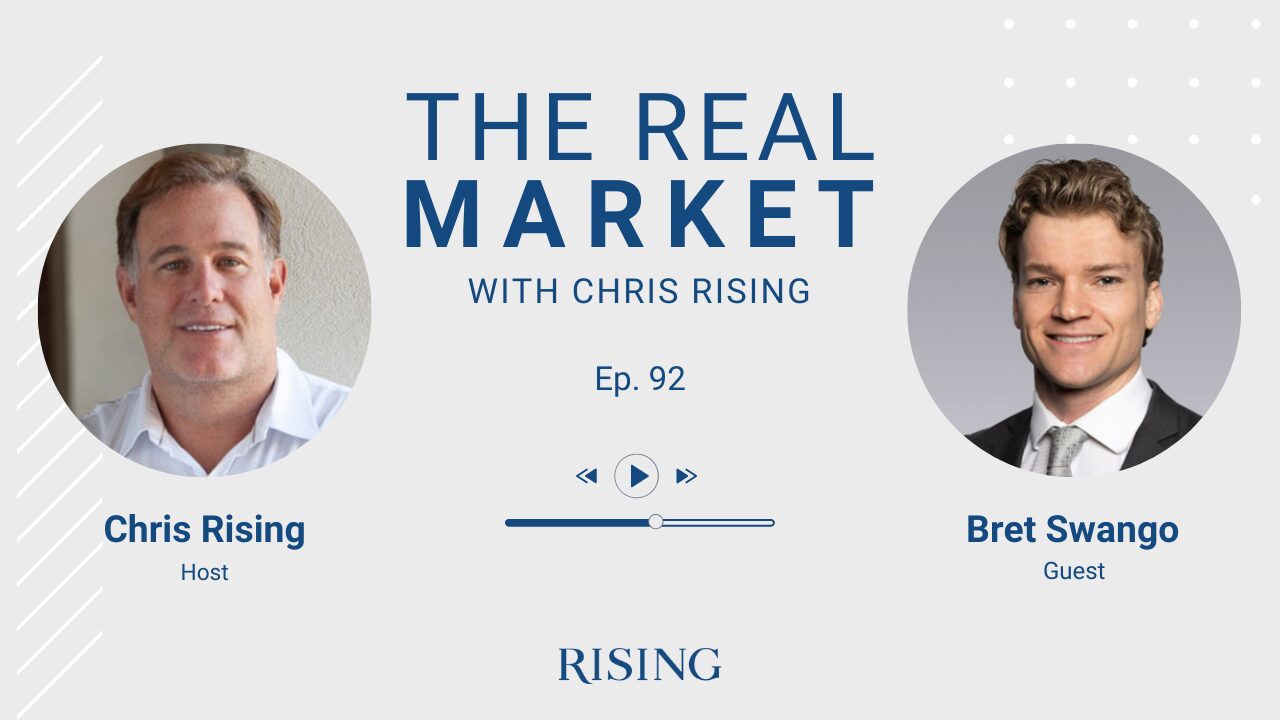
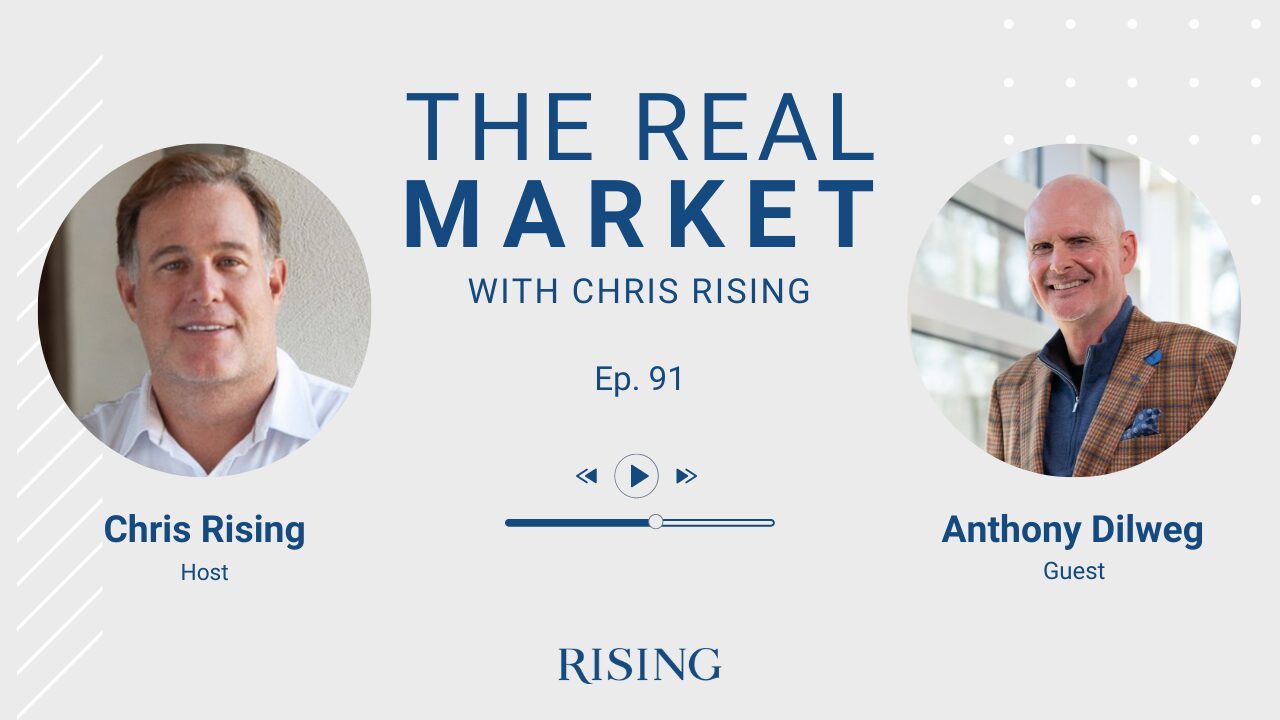
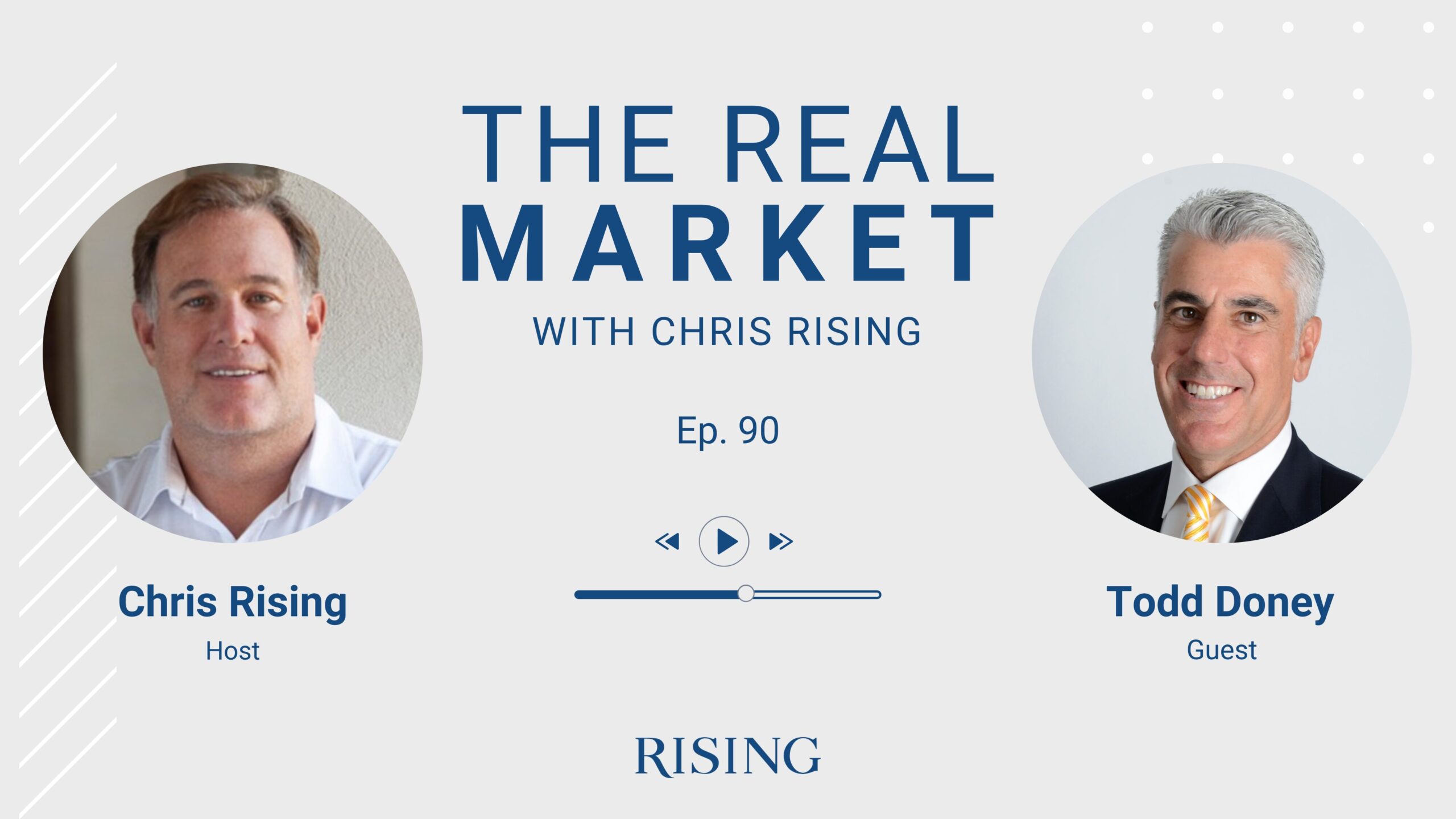
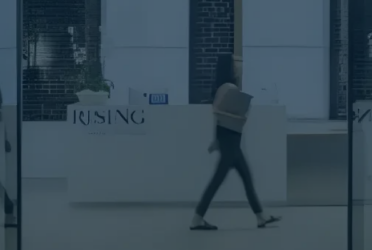
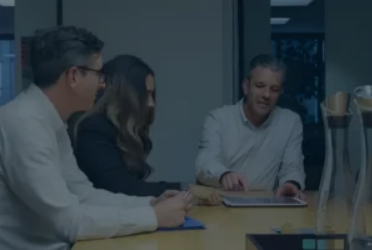
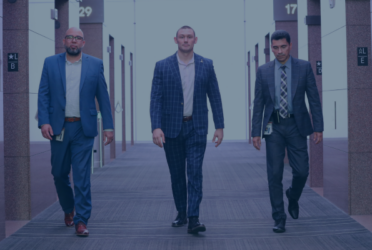
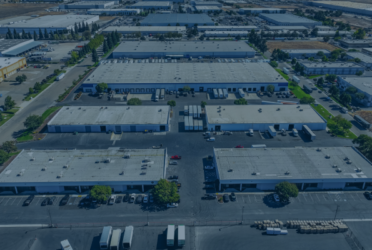
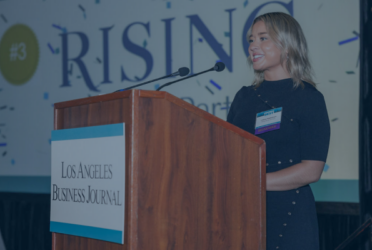
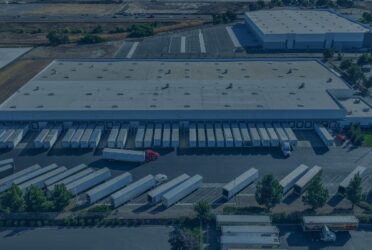
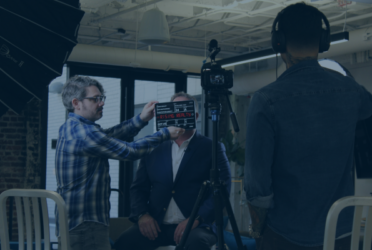
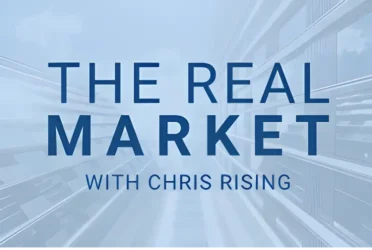 Podcast
Podcast